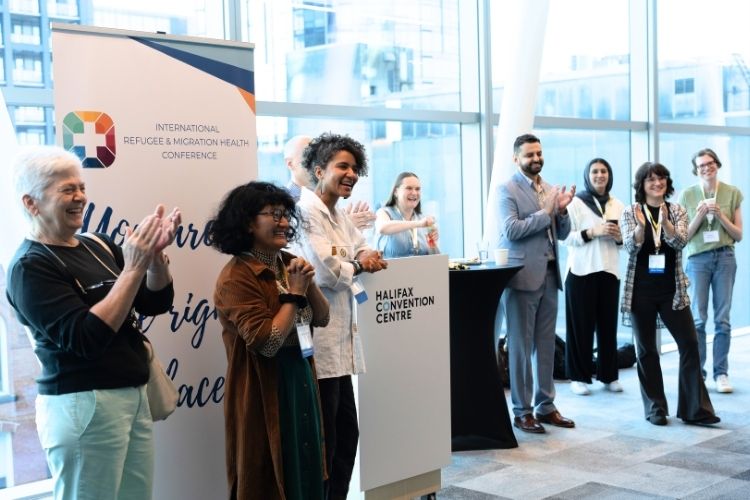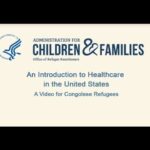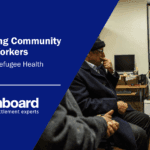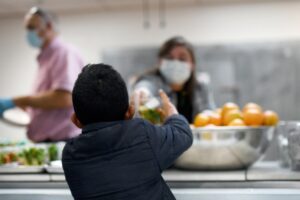The Society of Refugee Healthcare Providers organizes the International Refugee & Migration Health Conference (IRMHC), which is the largest refugee health conference globally. Annually, IRMHC brings together health care professionals, resettlement and service providers, researchers, community members, students, policy makers, and public health professionals. The 2025 IRMHC was hosted in Halifax, Nova Scotia, Canada, and welcomed 614 attendees in person and online. It covered the latest in best practices and emerging issues in primary care, sexual and reproductive health, pediatrics, community health, advocacy, education, research, mental health and well-being, infectious disease, models of care, vaccines, and screening.
This year’s gathering revealed an unexpected prescription: storytelling is critical to refugee health. This wasn’t abstract theory—it was lived experience, articulated in workshops, by plenary speakers, and in the keynotes.
Storytelling Builds Empathy
Tareq Hadhad, world-famous chocolatier and Syrian refugee resettled in Canada, shared a moving story during his headline keynote. In addition to being an entrepreneur, Tareq has given hundreds of speeches sharing his family’s story of resilience through adversity. His family’s story was also documented in a 2021 film called Peace by Chocolate (the same name as his chocolate company).
Tareq told the story of boarding a flight and sitting next to a man who made anti-refugee and anti-immigrant comments to him. When the man started watching Peace by Chocolate—available as one of the plane’s on-demand movies—he had no idea the main character was based on his seatmate. By the end of the film though, the man realized exactly who was sitting next to him. What followed was a complete transformation: hearing Tareq’s story through the movie encouraged genuine conversation about his refugee experience and changed the man’s entire tone.
Stories like Tareq’s help spark empathy by illuminating the human beings behind faceless terms such as “refugees,” “immigrants,” “migrants,” and “newcomers.” Empathy, in turn, helps people feel understood and safe, which is critical to an individual’s health and ability to integrate. It also helps build rapport between newcomers and the service and health care providers who serve them.
Storytelling Benefits Individuals
Research confirms what Tareq experienced firsthand: narrative writing and storytelling have measurably positive impacts on both mental and physical health. Numerous abstracts shared at IRMHC highlighted health programming that supported clients in narrating their lives and describing their health care experiences through storytelling, whether through writing, oral stories, or photography projects such as PhotoVoice. In clinical mental health settings, storytelling takes the structured form of Narrative Exposure Therapy (NET), a treatment that helps trauma survivors establish a coherent life narrative to contextualize traumatic experiences. Patients are guided to create a chronological story of their lives that incorporates both traumatic events and positive moments. By doing so in a safe therapeutic setting and supported by a licensed professional, NET allows a person’s fragmented memories to be refined and understood within a broader context of resilience and identity.
As several workshop presenters noted, health care providers and service providers working with refugees—even those without personal displacement experience—also possess meaningful stories about their work and the critical importance of refugee resettlement. For providers carrying the weight of their patients’ or clients’ experiences, sharing their own narratives becomes a vital shield against vicarious trauma and burnout.
Storytelling Counters Misinformation
In a world flooded by misinformation, public health storytelling helps promote the truth. In health and other fields, data alone (e.g., about a vaccine, or about health risks of a behavior) is often insufficient to change people’s health behaviors. With the COVID-19 pandemic, we observed that people’s personal stories about loved ones dying from the virus could sometimes change people’s minds when data alone could not. Who tells the story is of utmost importance.
During sessions, IRMHC attendees reflected on these lessons and how during the pandemic, health professionals partnered with community leaders, faith leaders, and other prominent people outside of the health world to deliver important health messaging about vaccinations. Those partnerships are still being used today for other health initiatives, such as hepatitis B prevention with the Migration Health Initiative.
Storytelling Builds a Collective Voice
Dr. Anisa Ibrahim, UW Clinic Assistant Professor of Pediatrics and medical director at Harborview Medical Center’s Pediatrics Clinic, declared during her keynote, “Speak up, even if your voice is shaking.” Storytelling builds a collective voice to call for change. Stories can help educate individuals, communities, or the world about a person’s or group’s experiences.
UNHCR ambassador, poet, and author JJ Bola drew on Will Storr’s book The Science of Storytelling: Why Stories Make Us Human and How to Tell Them Better during his keynote to make a profound point. Storr’s research reveals that neuroscience has discovered what we experience as reality is actually “an act of creation by the storytelling brain.” If our brains are constantly constructing the world through narrative, JJ Bola argued, then we possess the power to reimagine our future and build a different world through storytelling itself.
“Imagination is the engine, the fuel which brings our stories to life,” JJ Bola told IRMHC attendees. “It is our life force, our hope, that we may change the world from what it is to what it could be. Imagination is the passport to our future.”
We look forward to continuing the stories at the next IRMHC, which will take place in San Diego, California, from June 26–28, 2026.
The IRC received competitive funding through the U.S. Department of Health and Human Services, Administration for Children and Families, Grant #90RB0053. The project is 100% financed by federal funds. The contents of this document are solely the responsibility of the authors and do not necessarily represent the official views of the U.S. Department of Health and Human Services, Administration for Children and Families.










